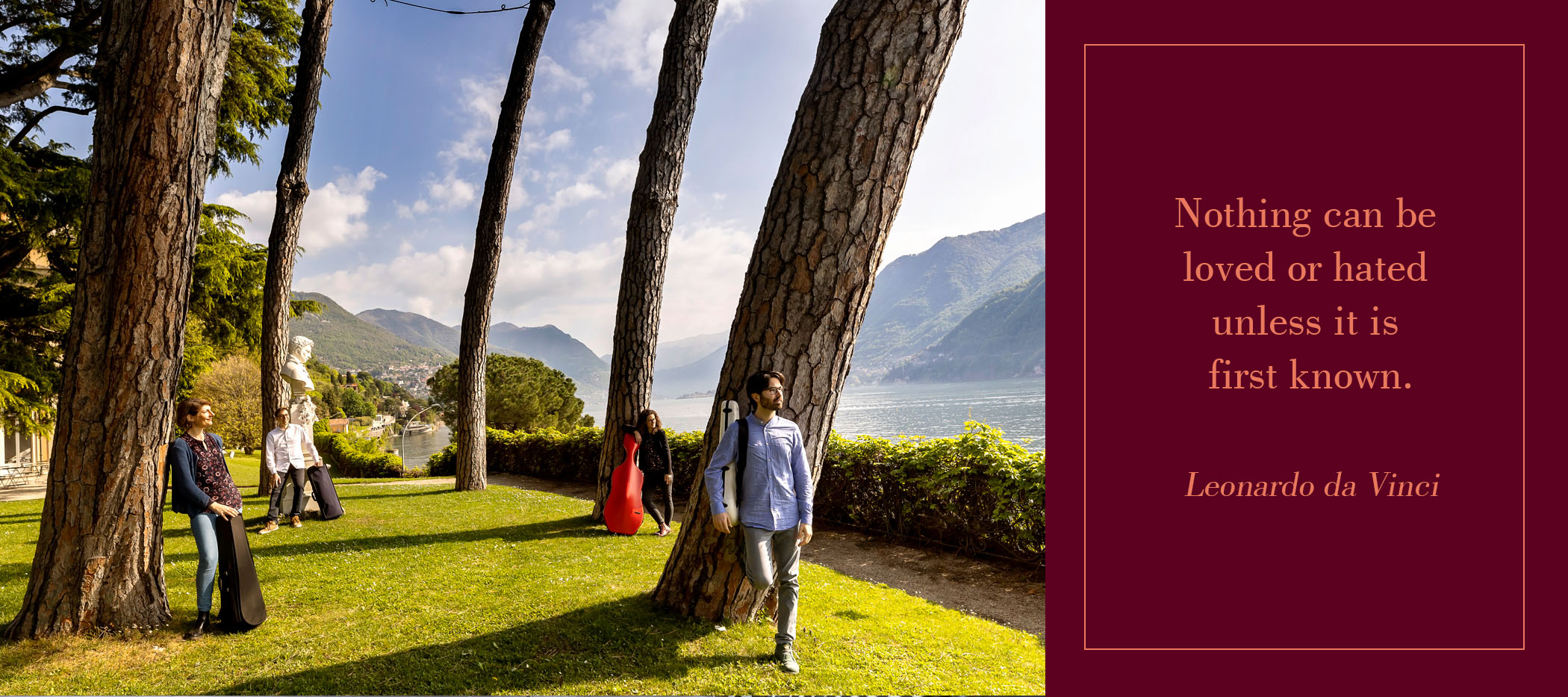


FRANCESCO PASQUALE RICCI

THE COMPOSER
Francesco Pasquale Ricci (Como, 17 May 1732; Loveno di Menaggio, Como, 7 November 1817) well sums up the figure of the 18th century Lombard violinist-composer.The musician, from a well-to-do family originally from the Lake Como area, after entering the Franciscan order of Friars Minor between 1755 and 1757, trained in Milan, the political and cultural capital of Habsburg Lombardy, with Giuseppe Vignati, maestro di cappella at the Regio Ducal Theatre. After his stay in Milan, in 1759, Ricci was appointed chapel master and organist of Como Cathedral: a position that did not prevent him from maintaining relations with the aristocratic families of the Lombard capital, as a teacher, composer and performer, and later, between 1764 and 1780, from travelling through Europe for seventeen years, touching on the main stages of the Grand Tour.
He left in the company of his friend and cellist Francesco Zappa for Dresden, and after giving concerts in Germany, Holland and Belgium, he finally settled in The Hague, collaborating as a guest maestro in the musical activities of the court and earning the esteem and protection of influential figures.
Between 1760 and 1770, a number of his printed works came to light, including symphonies, string trios, quartets and sonatas. Occasional trips to Paris, Vienna and especially London consolidated his international reputation, also through reissues of his compositions.
It was precisely his stay in London in 1767, the final stage of a tour with Zappa himself, that marked a high point in his career: his Sinfonia concertante (the first composition to be published under this title) and the Dies Irae, which made him particularly famous and popular among his contemporaries, date from this period. Around 1778, however, the authorities of Como Cathedral began to exert pressure on the maestro di cappella, replaced pro tempore by Tommaso Gilardoni (†1779), to return permanently to his seat: a request that the musician managed to procrastinate until 1780, thanks to the intercession of Baron von Reischach, Joseph II's ambassador to The Hague. Unable to evade the stringent demands, Ricci was finally forced to return home, settling definitively in the Como area. His health and the changed political situation, with the war between England and Holland in progress (1780-1784), made the composer desist from new travel intentions until his death.
THE WITNESSES
The collection of six Quartets is attested in two printed editions (Markordt and Welcker) and bears the opus number VIII. The Quartets thus occupy a prominent position in the composer's catalogue, standing between the Dies irae op. VII and the Sinfonie Concertanti op. IX.The existence of two editions is justified by Ricci's collaboration with the engraver Anton Stechwey, working in The Hague, to whom we owe the first printing plates, later sold to various printers. The agency run by Sigfried Markordt (Hanover 1720 - Amsterdam, 1781) was certainly smaller than that of Johann Julius Hummel, whose work Ricci had used for his first work (Sei Trio per due violini e violoncello obligato [...] op. III [1765]) and for the first collection of Six Symphonies op. II: in 1769, Markordt had, for instance, published J.C. Bach's Six Symphonies for Eight. On the other hand, the Welckers - first their father Peter and later, after his death in 1775, his son John - were also particularly active in London as music sellers, engravers, printers and publishers and their catalogue included, in addition to the aforementioned J.C. Bach, various Mannheimers, composers from the Milan area, etc.
Manuscript versions of the Quartets Op. VIII have also been handed down. These are incomplete witnesses at Prämonstratenser-Stift, Musiksammlung, 58 in Schlägl (A-SCH); the Staatsbibliothek in Berlin (Mus. Ms 18431); the Museo internazionale e biblioteca della musica in Bologna (Coll. II. 267) and finally the Universitetsbibliotek in Uppsala (Instr. mus. i hs. 74:1).
The dedicatee of the work is Baroness Catharina Lucia van Lijnden, as stated on the title page of the Markordt edition, which also contains information on the destination of this repertoire, namely the 'country academies' of the 'most honest lady', who came into contact with Ricci around 1768. From this and other historiographical circumstances, corroborated by stylistic observations - the order of the three movements, which favours the slow in the first and third positions; the tonality, fixed barring mode shifts; the bass with a predominantly harmonic function - the Quartets could probably date back to the late 1760s.
Text by Silvia Del Zoppo.







